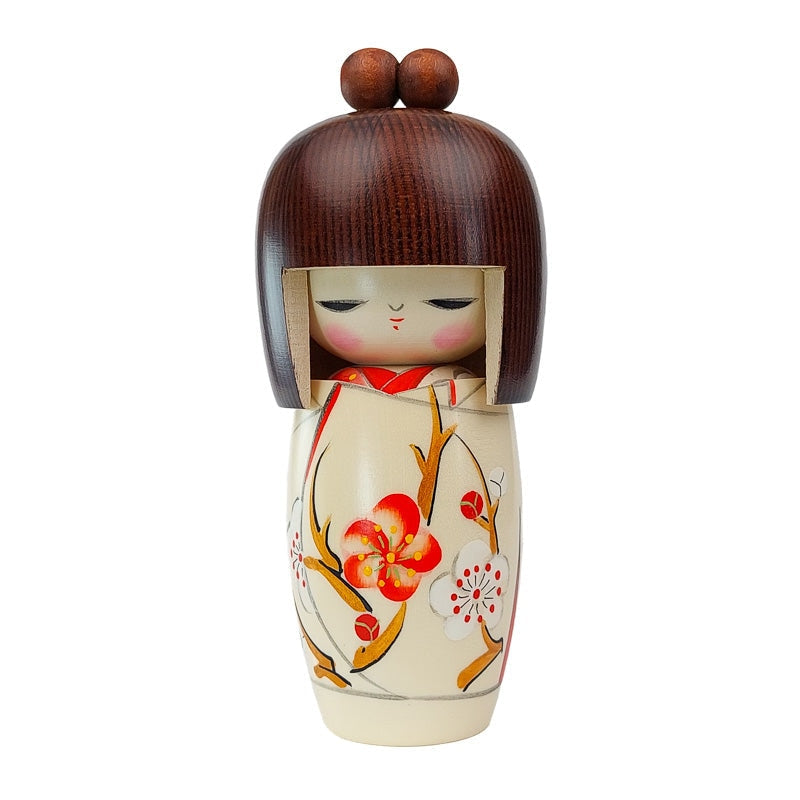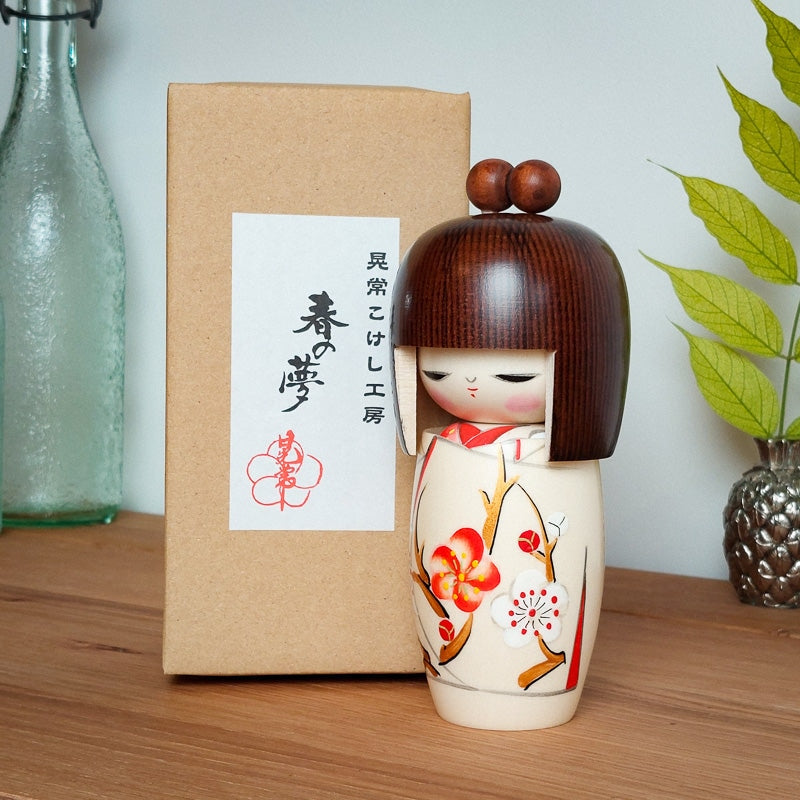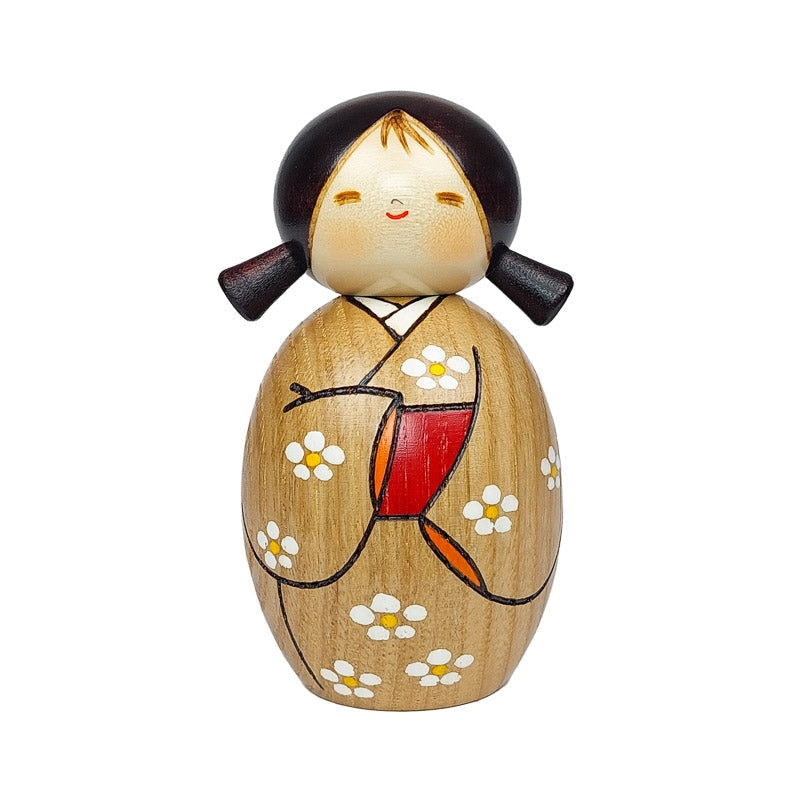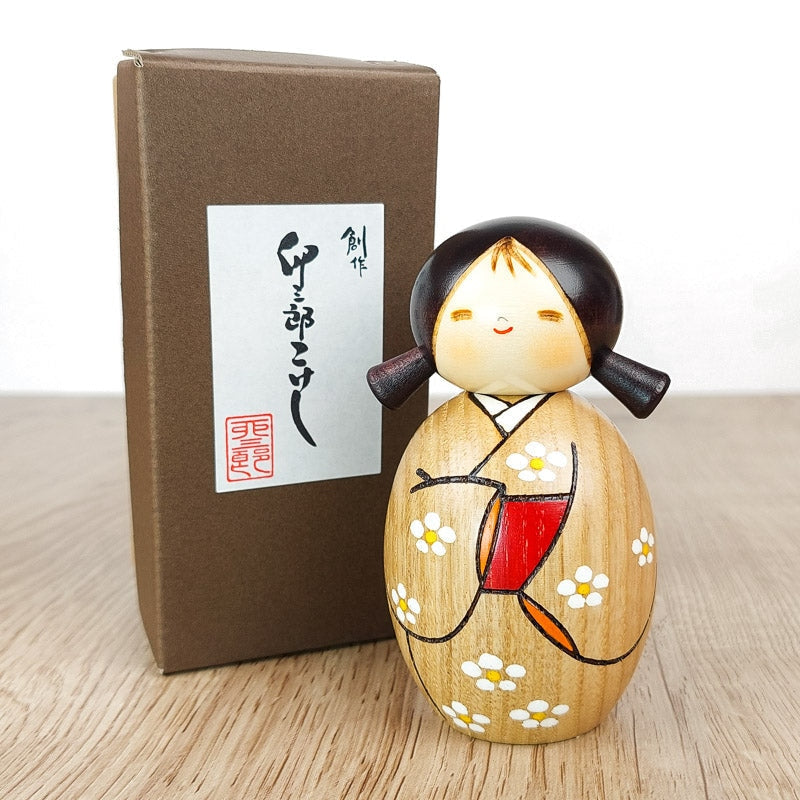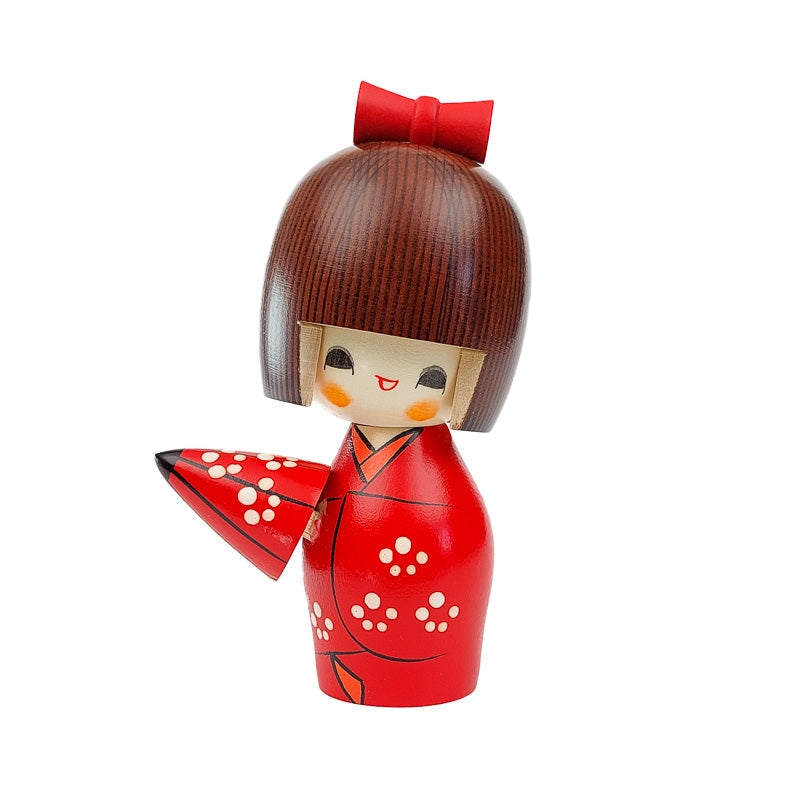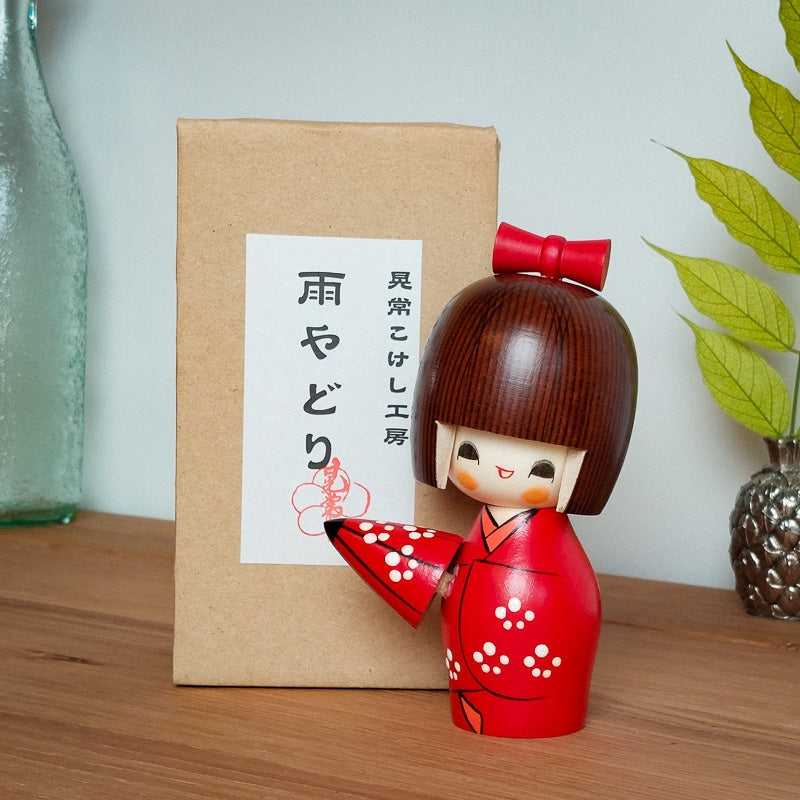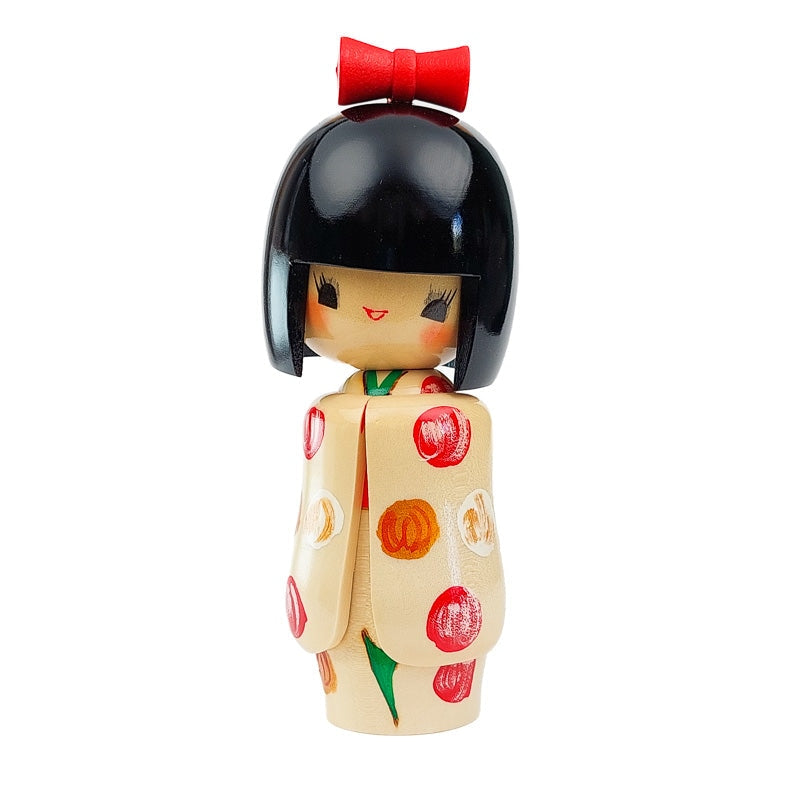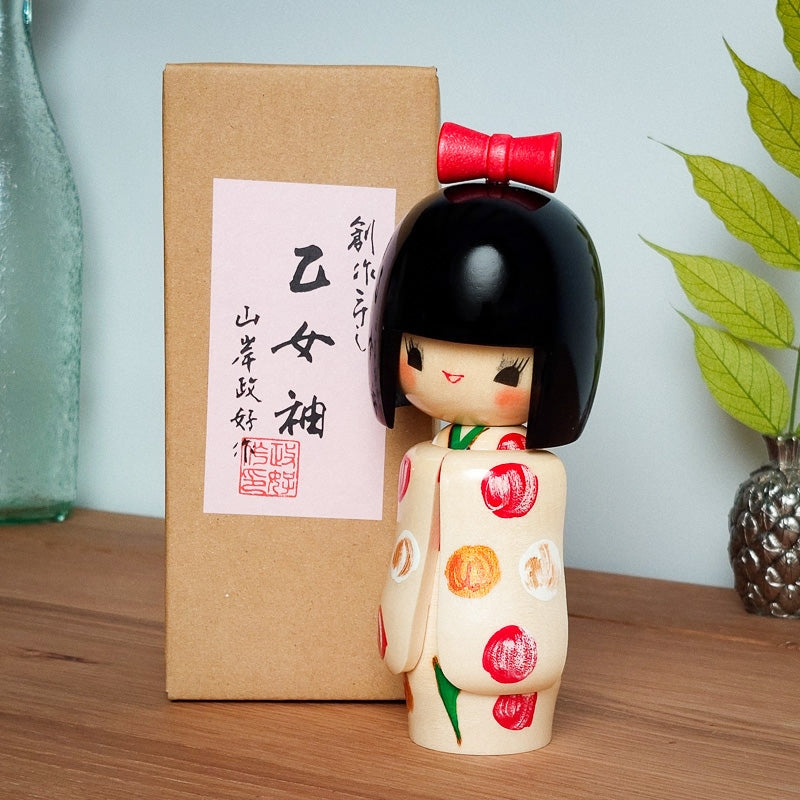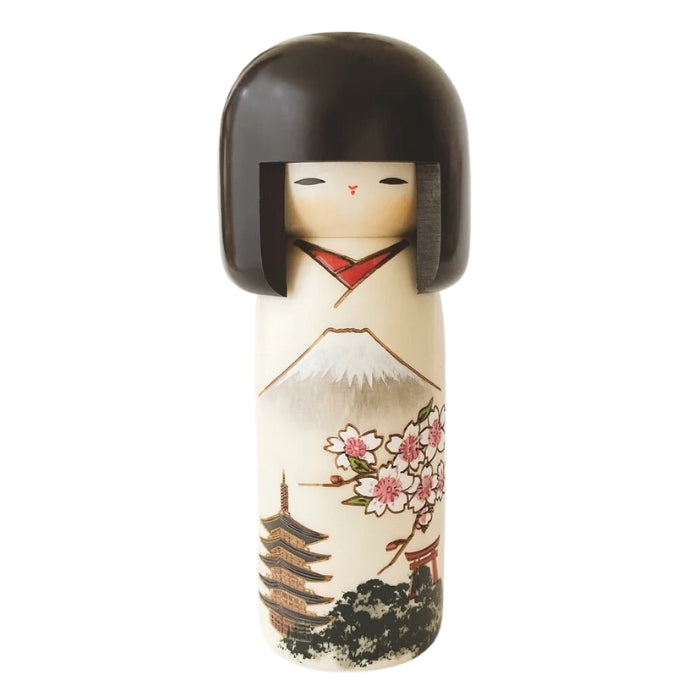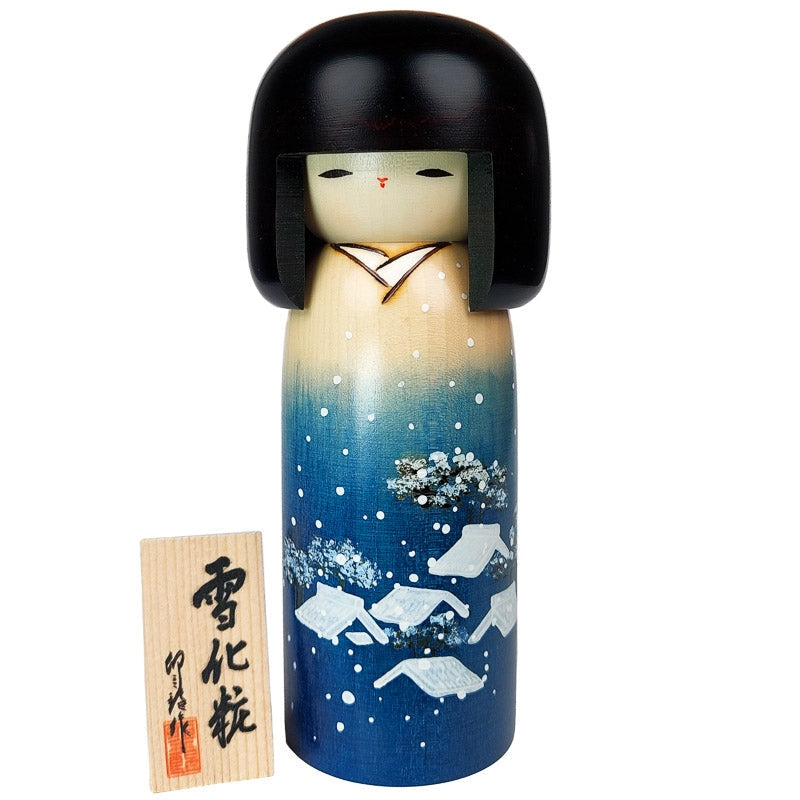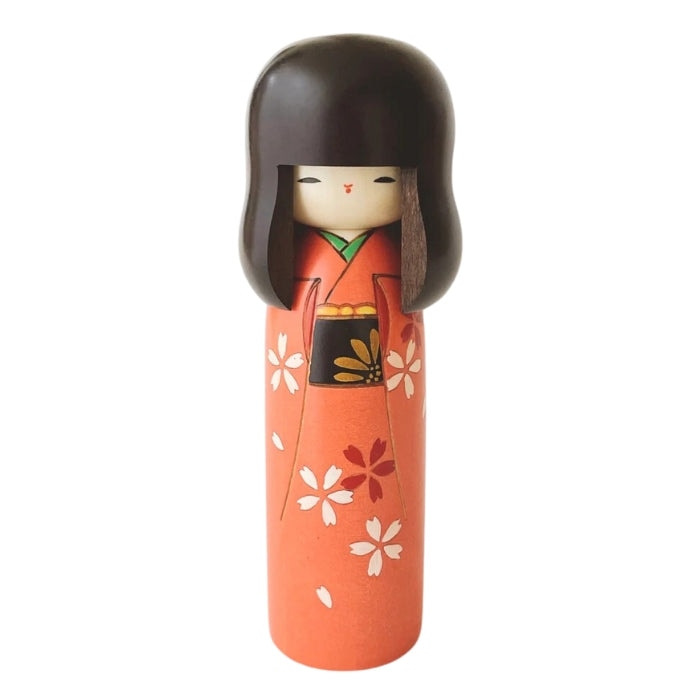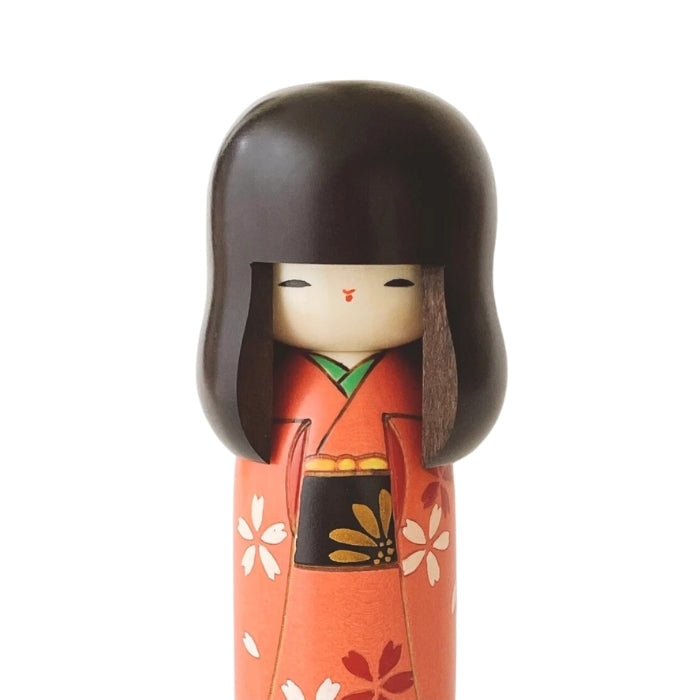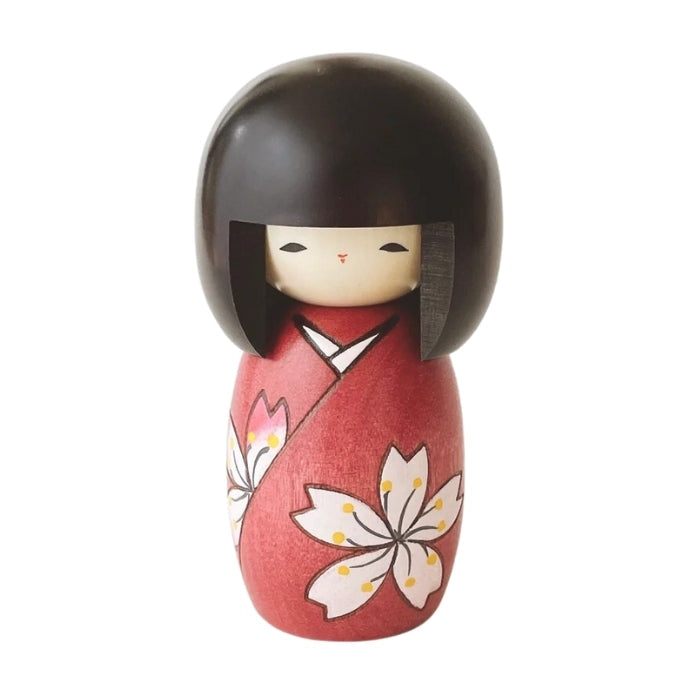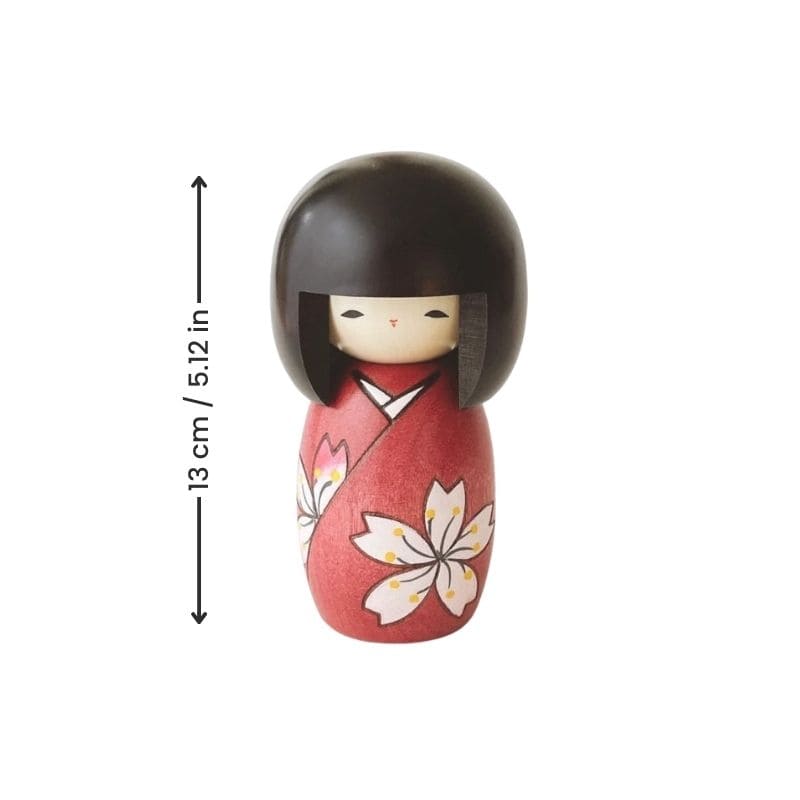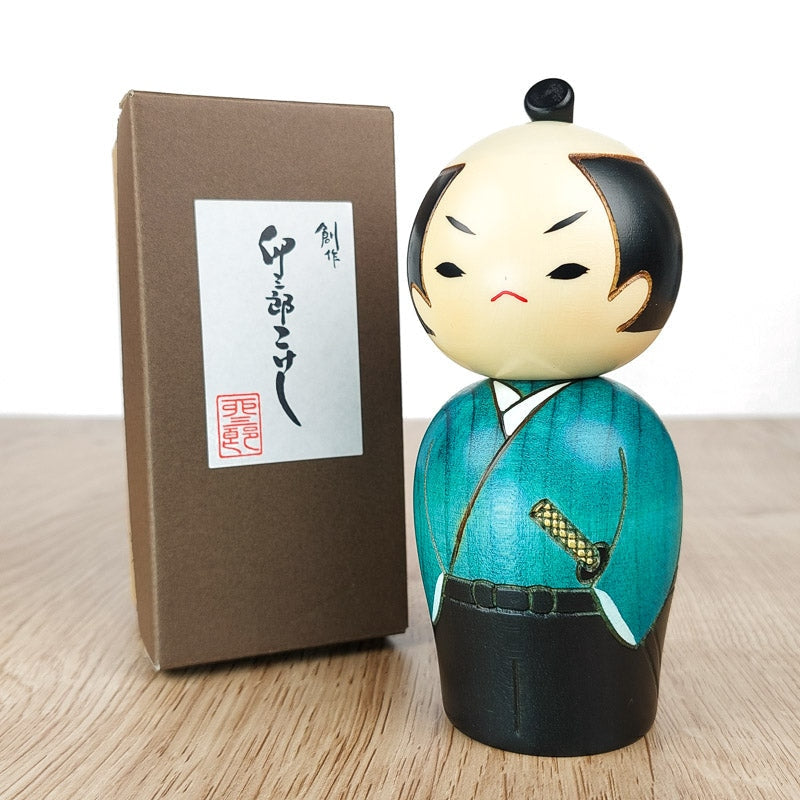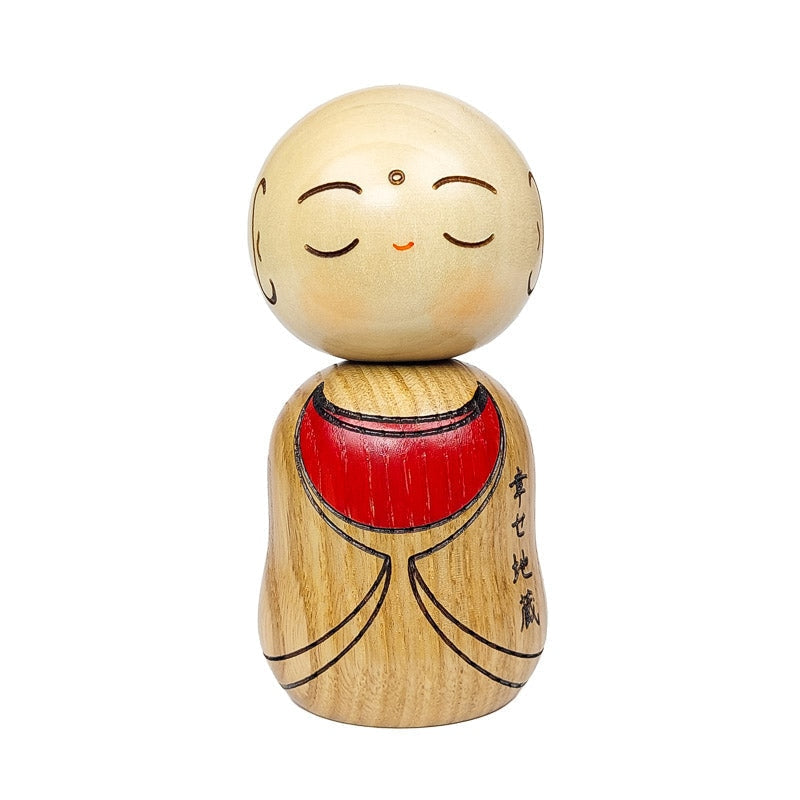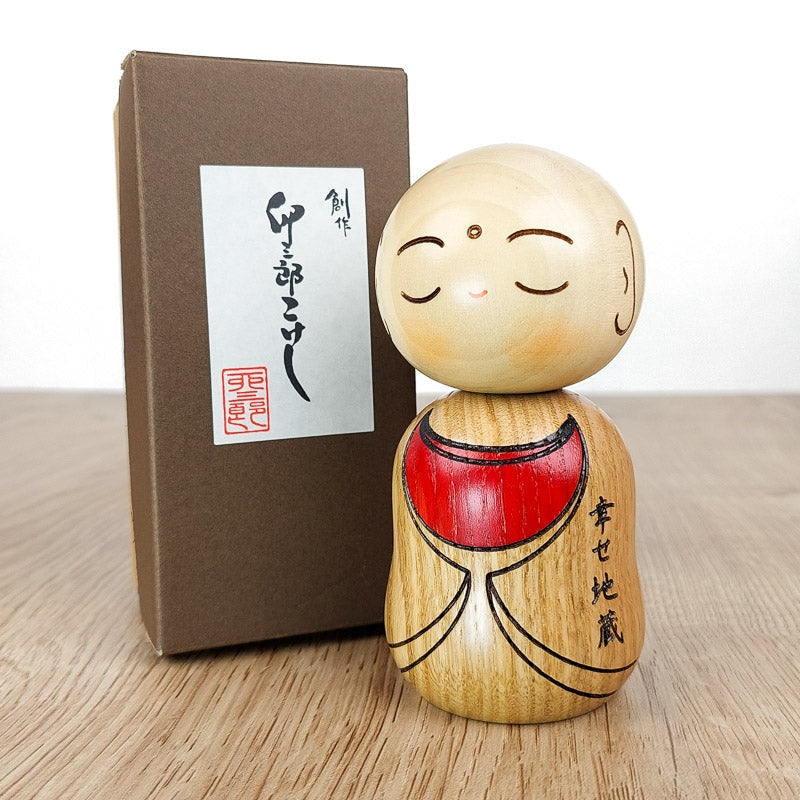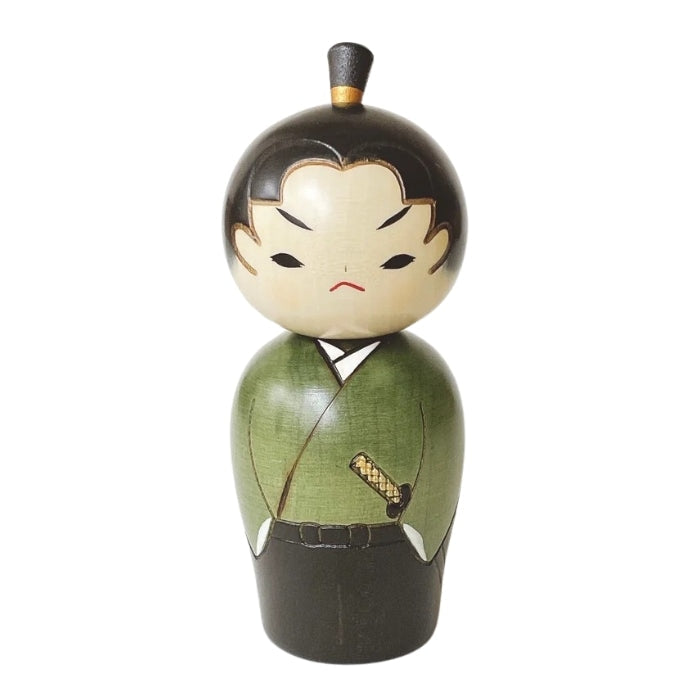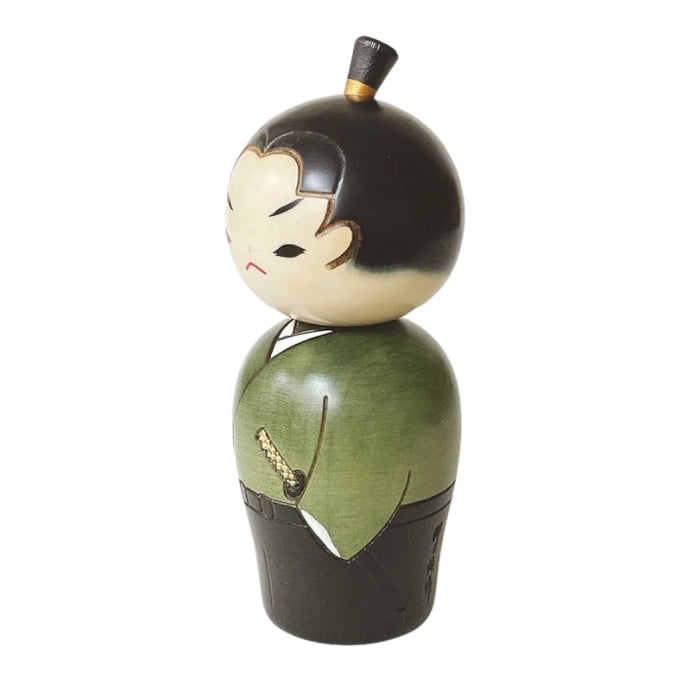In the Japanese archipelago, Japanese dolls are extremely popular. Have you ever heard of kokeshi? If you ask Google, a small wooden doll will appear on your screen!
Kokeshi dolls are Japanese dolls carved out of wood, hand-painted and originating from the province of Tôhoku. They are major representatives of Japanese craftsmanship and constitute truly unique creations.
But what are kokeshi dolls? What is their origin? How are they made? And what are the different types of kokeshi?
Let's focus on this handcrafted treasure coming straight from the Land of the Rising Sun.
👧 Kokeshi: history and origin of the Japanese doll
Originating from the northern region of Japan, kokeshi dolls represent little girls, carved on wood. They are hand decorated and lacquered. These limbless statuettes date back to the early 19th century (late Edo era). They can be identified by their cylindrical bodies, rounded heads, and multicolored designs.

These toys for children were made in Tôhoku, a tourist region which was renowned for its hot springs (onsens). The kijishi craftsmen (local wood carvers) used to manufacture wooden objects requested by 17th century spa tourists. Thus, they used to propose them wooden bowls and trays as well as kokeshi dolls which they could bring back as a souvenir.
Being satisfied with this version of the origins of the kokeshi dolls would mean ignoring the Japanese culture full of symbolism and legends. Other hypotheses attempt to demystify the origin of these dolls which represent a well kept Japanese cultural heritage.
According to some researchers, these statuettes were made in memory of the children who were sacrificed because of the starvation, while other versions claim that they were an invocation of the deities of fertility and good harvests... These figurines actually represented the desire to have a child. Another theory pretends that the kokeshi were massage accessories for the rituals practiced in the onsen.

Credits: Tiger500 on Flickr
Kokeshi : etymological origin
The etymology of the word Kokeshi is also subject to a variety of different hypotheses. For some, the term "ko" would derive from "ki" (tree) and "keshi" would derive from "kezuru": to plane, to scrape. Others claim that "ko" refers to the word "child" in Japanese and "keshi" comes from the verb kezuru: to remove, to make disappear.
It is important to note that in the past, several words were used to designate Japanese dolls, depending on the region: kogesu, kiboko, deko, etc. It was only in 1940 that the word Kokeshi was standardized by consensus among Japanese craftsmen and collectors.
🔎 The different types of handmade dolls
An authentic Kokeshi doll is always made out of wood, handmade and painted by a Kijishi craftsman.
An initial classification can be made according to the geographical criterion. In fact, each spa tourism region has developed its own style; ten regions take precedence over the others, namely: Hijiori, Kijiyama, Nambu, Naruko, Sakunami, Tôgatta, Tsuchiyu, Tsugaru, Yajirô and Zaô.

Another categorization of kokeshi-dolls, based on the design, is also adopted.
Dento Kokeshi: traditional style
The local craftsman respects the shapes and colors that have characterized the style of his region for centuries. As a result, the shape is rather simple and the colors are few; each family of craftsmen uses local natural colors. This is the traditional version of the doll. Moreover, "dento" means "transmission of what is fundamental".
Shingata Kokeshi: modern style
Introduced in the early 1950's, these dolls display colors and shapes not totally conforming to the tradition of the ancestors (with greater freedom in the choice of designs, with separate heads and bodies, etc.) "Shingata" means "new model".

Left: Dento kokeshi. Right: Shingata kokeshi.
🔨 The making of a traditional Japanese doll
An authentic dento-kokeshi doll is always signed by the master craftsman who conceived it; this is supposed to certify that it has been made according to a preciously safeguarded know-how.
Which wood for making a kokeshi doll?
The kijishi prefer to work with mizuki (dogwood) and itaye-kaede (Japanese maple), as they can withstand carving and yet are soft. Other types of wood are also used, such as cherry. Whatever the type, a piece of wood for a kokeshi should be dried outside for at least one year.

Credits: Yoppy on Flickr
The process of making the Dento-kokeshi
After drying, the wood is cut into small pieces which are roughened, carved and sculpted with sharp objects such as a carving knife and a wood lathe.
Originally, the lathes were manually operated by a third party (the craftsman's wife, his child or an apprentice). Later on, the foot powered lathes allowed for solo production before electric models took over.
The traditional Kokeshi doll is small in size. It has no arms or legs; the sculptor emphasizes a simple cylindrical shape (the body) harmoniously surmounted by a sphere (the head).
Once carved, the doll is painted by hand. Although the body is nowadays painted by using modern equipments, the face painting is still ritually done by hand by the craftsman. It bears his personal touch, recognizable by experts. Each dento-kokeshi is supposed to be unique.
Lastly, to finish the work, a coat of lacquer is applied to protect the decorations from wear and tear. The patterns and shapes are simple, harmonious and identifiable.
Note that the art of making kokeshi dolls is passed down from father to son.
💡 The kokeshi doll and modern times
While modern kokeshi dolls are more creative, colorful and design-oriented than they used to be, they are still created by real Kijishi. Besides, the shingata-Kokeshi (modern design doll) is officially declared as a "symbol of Japan". In addition, every year the Japanese Prime Ministers honor the creative craftsman who designed the most beautiful Kokeshi (contest launched in 1954).

Credits: Robert Francis on Flickr
True to their tradition of drawing from the treasures of their past, modern Japanese artists and designers could not remain unaffected by the charms of these wooden pieces.
For example, these little dolls in kimono inspired the famous Japanese video game producer, Shigeru Miyamoto, for the creation of the Mii avatars, the characters of the Nintendo Wii game console. Similarly, the Australian firm The Aird Group was influenced and inspired by kokeshi for its Kimmidoll brand of designer dolls (lucky charms made of plastic).
Nowadays, the symbolic charge of Japanese kokeshi dolls has diminished. This wooden figurine is now used for interior decoration purposes, as a toy for children, a key chain or other gift ideas.

Plastic Kimmidoll.
In today's Japan, giving a kokeshi doll is more like a way of showing love and affection rather than an expression of goodwill. But, there is still a real plebiscite among the population and a passion among collectors.
To conclude our focus on the Kokeshi, the traditional Japanese doll is part of these objects that symbolize Japan as would do the babouches or the caftan in Morocco.
The little Asian girl made out of colored wood went through centuries and borders without ever losing her charm. It has become a national reference in the archipelago and a decorative object synonymous of elsewhere. How about you, are you a fan of this lovely Japanese good luck charm? Do you prefer the modern or traditional style? Discover our collection of japanese figurines and kokeshi keychains.


